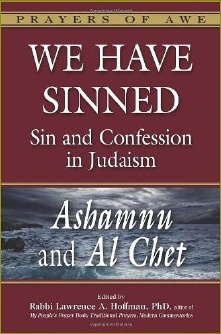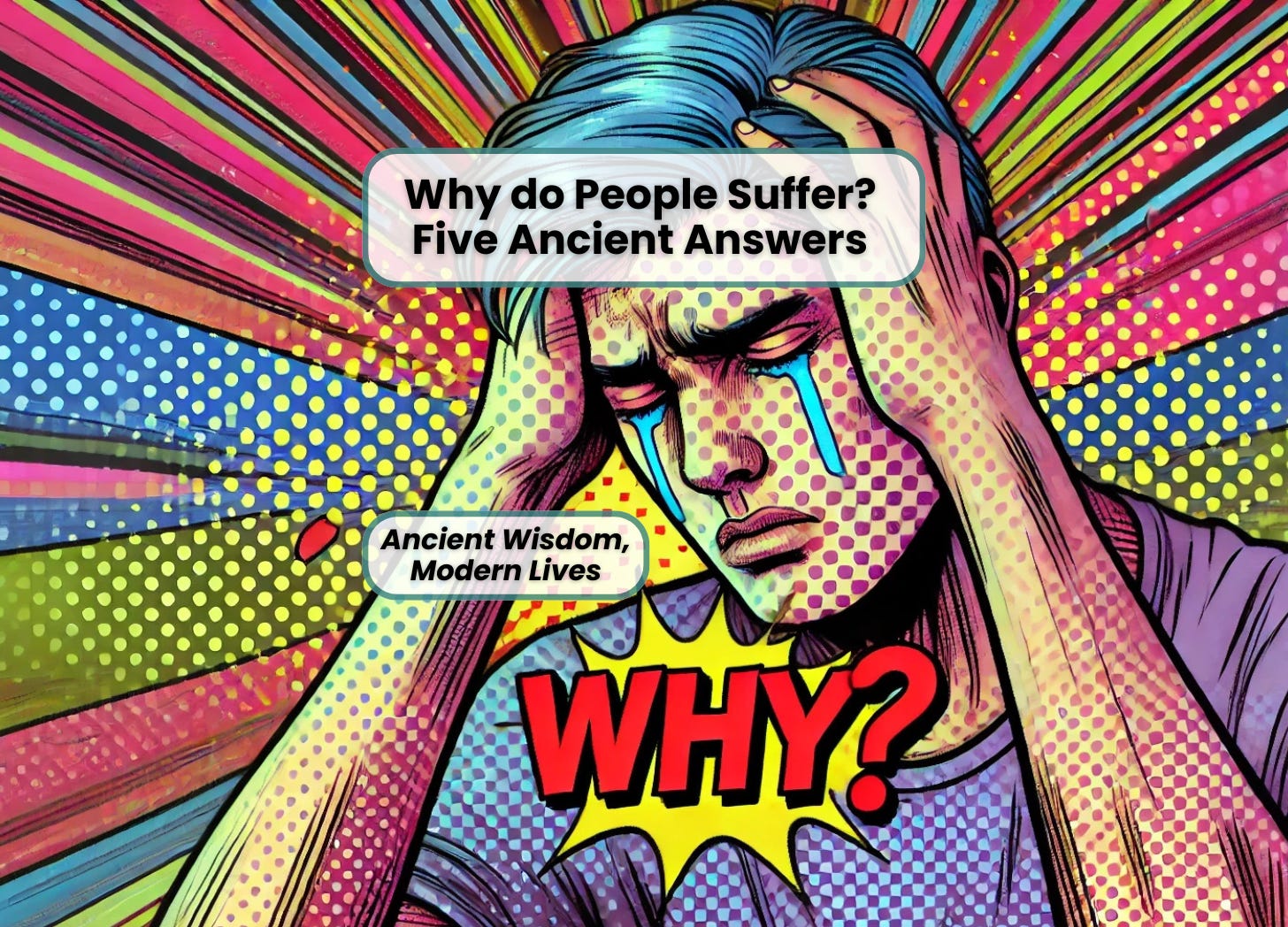We Have Sinned: Sin and Confession in Judaism
I’m pleased to announce the third volume in the “Prayers of Awe” series: We Have Sinned: Sin and Confession in Judaism. Representing the 15th time I’ve collaborated with my father, Rabbi Lawrence Hoffman, the book contains my translations of ancient Hebrew liturgical poems, along with detailed notes about why I made the decisions I did, so it may be of interest to those who are curious about how I approach translation.
The book also contains detailed essays on the topics of sin, human nature, and repentance, as well as dozens of shorter pieces approaching those same topics from a multitude of viewpoints. As my father writes:All my life, I’ve wondered about the High-Holiday confessions in Judaism, and I finally edited a book about them. Called We Have Sinned, it just came out from Jewish Lights Publishing, and it represents a multitude of Jewish voices on the topics of sin, human nature, and repentance.
The book is a beginning of a conversation. I hope we can continue it here.
Translating the Hebrew presented some particularly interesting challenges for me. Right off the bat, I had to deal with the central prayer in the book, ashamnu, which consists of an alphabetic acrostic of 24 verbs in a row, all roughly meaning “we have sinned.” More generally, much of the poetry is built around synonyms. As I write in the book (p. 92):
This creates a double challenge for the translator.
I no longer actively write this blog, but you can find me at Ancient Wisdom, Modern Lives
Subscribe Now I'd love to see you there!First, words often have fewer synonyms in English than in Hebrew. When that is the case, so that there is no natural English for all of the Hebrew synonyms, we must choose between accuracy and naturalness. But the poetic force of the Hebrew comes less from the nuance of each word than from the cumulative impact of the combined string of synonyms, so a non-natural translation for a specific word impacts not only that word but the words around it as well.
A parallel example would be this familiar phrase from Shakespeare’s Comedy of Errors (act 2, scene 2):
Was there ever any man thus beaten out of season,
When in the why and the wherefore is neither rhyme nor reason?A “translation” of the second line along the lines of “when in the why and the cause of what happened is neither poetic assonance nor reason” matches in some regards but misses the mark in others.
I think similar issues sometimes impact Bible translations.
I’ll try to post more from the book soon.
al chet ashamnu Bible Bible translation confession sin translation







4 Responses
Is it even possible to translate the acrostic?
No. I gave up on the acrostic.
There are translations that try to preserve it, though. They end up with “we have been guilty of xenophobia” and “we exhibited zeal for unworthy causes” toward the end. It sounds really forced in English. (One year I was giving a sermon and I offhandedly remarked, “I know we’ve stolen xylophones….” The regulars all laughed. The others had no idea what I was talking about.)
So did you include a footnote about the acrostic? Or rather, is it common to include something like that in a footnote when it cannot come across in translation? I have heard that there is somewhat of an acrostic of the Tetragrammaton in Ester.
Yes. As with most of my published translations in this series (and the related 10-volume series, My People’s Prayer Book), I try to have footnotes whenever the translation misses something important or interesting in the original.
In general, I think this is the best way to go: Try to get as much as possible into the translation, then fill in the blanks with footnotes. This way, someone who reads just the translation gets as much as possible, and someone who reads the notes, too, gets the complete picture.
I also include footnotes of a second variety, just to provide additional (hopefully interesting) information: related passages of Scripture, matters of linguistics, related words in Modern Hebrew, etc.
And yes, there are some acrostics spelling Y-H-W-H in the Book of Esther, though at least one runs backward. I haven’t looked into this enough to have an opinion about whether those acrostics were put there on purpose, or are just a matter of happenstance, but either way, I would highlight them in a footnote.